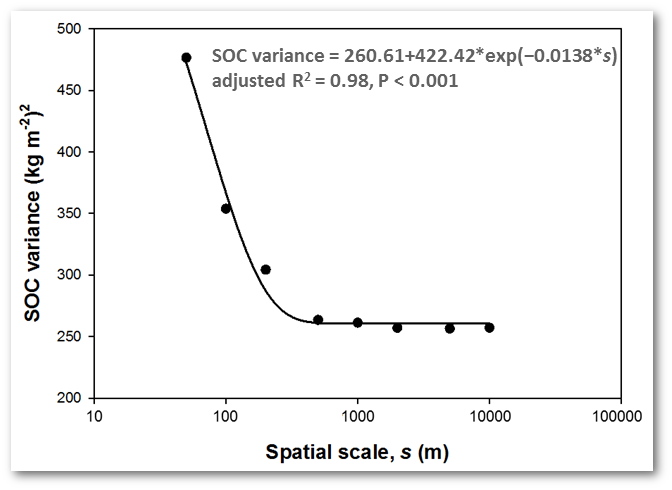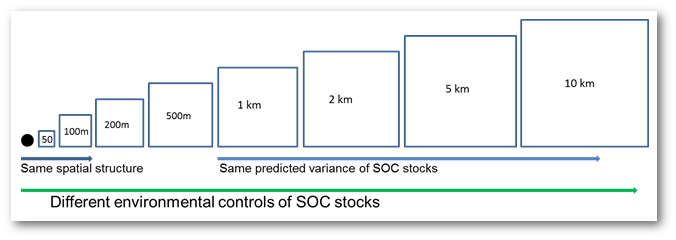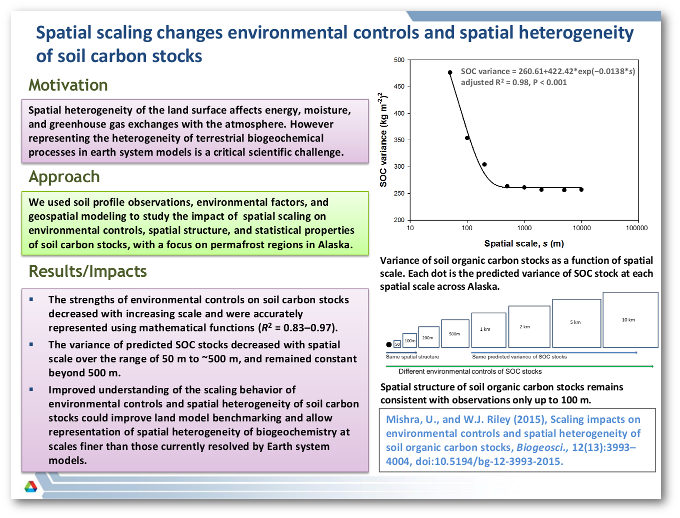Research Highlights
Quantifying impacts of spatial scaling on environmental controls and spatial heterogeneity of soil carbon stocks
July 2, 2015
Objective
Spatial heterogeneity of the land surface affects energy, moisture, and greenhouse gas exchanges with the atmosphere. However representing the heterogeneity of terrestrial biogeochemical processes in Earth system models is a critical scientific challenge.
Approach
We used soil profile observations, environmental factors, and geospatial modeling to study the impact of spatial scaling on environmental controls, spatial structure, and statistical properties of soil carbon stocks, with a focus on permafrost regions in Alaska.
 |
Variance of soil organic carbon stocks as a function of spatial scale. Each dot is the predicted variance of SOC stock at each spatial scale across Alaska. |
 |
Spatial structure of soil organic carbon stocks remains consistent with observations only up to 100 m. |
Results/Impacts
- The strengths of environmental controls on soil carbon stocks decreased with increasing scale and were accurately represented using mathematical functions (R2 = 0.83–0.97).
- The variance of predicted SOC stocks decreased with spatial scale over the range of 50 m to ~500 m, and remained constant beyond 500 m.
- Improved understanding of the scaling behavior of environmental controls and spatial heterogeneity of soil carbon stocks could improve land model benchmarking and allow representation of spatial heterogeneity of biogeochemistry at scales finer than those currently resolved by Earth system models.
Mishra, Umakant, and William J. Riley. July 2, 2015. “Scaling Impacts on Environmental Controls and Spatial Heterogeneity of Soil Organic Carbon Stocks.” Biogeosci., 12(13):3993–4004. doi:10.5194/bg-12-3993-2015.
